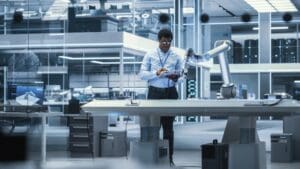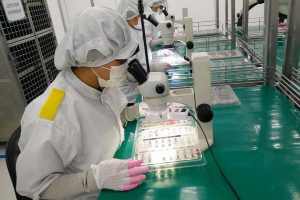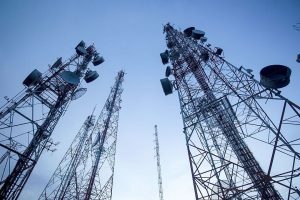Artificial intelligence and robotics could automate more than half of all work carried out in the United States — with existing technology — according to a new report from the McKinsey Global Institute.
The research finds that 57% of US work hours could be automated today if organisations redesigned workflows around the capabilities of AI agents and robots. The analysis suggests that nearly half of American jobs sit within occupations facing significant disruption from automation.
Around 40% of the roles most vulnerable involve drafting, information processing and routine reasoning — tasks at which AI agents already excel. Hiring in some of these fields, including paralegals, office administrators and even computer programmers, has slowed as companies assess the potential for AI to absorb large portions of their workload.
Physical roles are also at risk. Jobs performed in hazardous environments, such as warehouse operations or machinery handling, are highly likely to be replaced by robotics as adoption costs fall and safety concerns increase.
Conversely, McKinsey found that roughly one-third of American jobs are difficult to automate because they require deeply human qualities — from empathy to dexterity. Nursing and social care are among the safest professions, with 70% of tasks requiring physical presence, compassion and intuitive decision-making that machines struggle to replicate. Maintenance and repair roles, which require judgment, adaptability and work in unpredictable environments, are also hard to automate.
The report — Agents, Robots and Us — emphasises that the biggest barrier to large-scale automation is not technological capability but policy decisions, investment and companies’ willingness to overhaul entire workflows rather than automate piecemeal tasks. McKinsey estimates that redesigning work with AI in mind could generate $2.9 trillion a year in economic value by 2030.
The report paints a future in which humans work in partnership with AI rather than being replaced wholesale. Workers will spend less time preparing documents or processing data and more time interpreting outputs, guiding AI systems and making higher-level judgments. Teaching is highlighted as a sector where hybrid AI use could remove administrative burdens and support lesson planning, while leaving educators to lead, evaluate and interact.
While jobs will disappear, McKinsey argues that new roles will emerge — including AI product managers, safety specialists, system trainers and engineers responsible for tuning and supervising automated tools.
Real-world evidence suggests the shift is already under way. Fintech group Klarna has said it can continue to grow revenue without growing headcount, thanks to AI. Law firm Clifford Chance and telecoms provider BT have recently announced job reductions linked to increased automation.
Early-career workers appear most exposed. A recent Stanford study found that employees aged 22–25 in AI-intensive occupations have experienced a 13% decline in employment, although more experienced workers have not yet seen equivalent displacement.
McKinsey’s report follows Microsoft’s recent analysis predicting that translators, sales representatives and financial advisers face early AI disruption, while nurses, plumbers, ship engineers and water treatment operators remain among the safest professions.

















